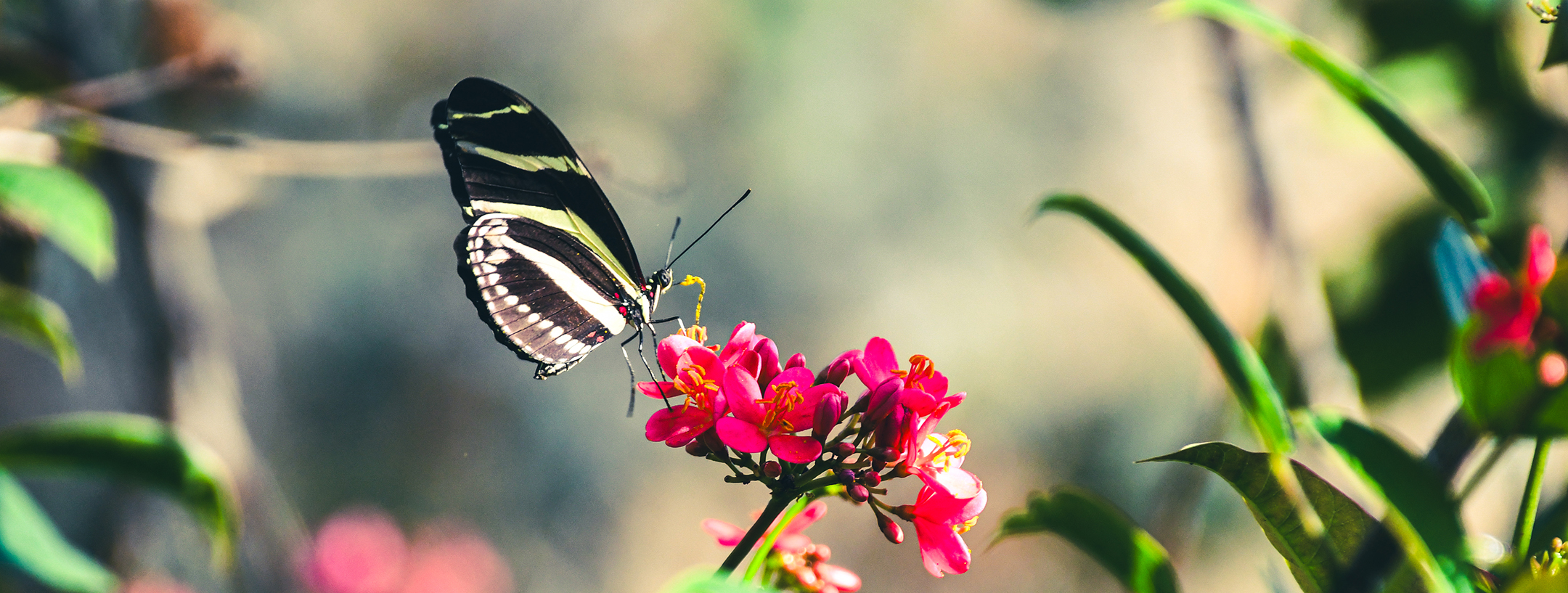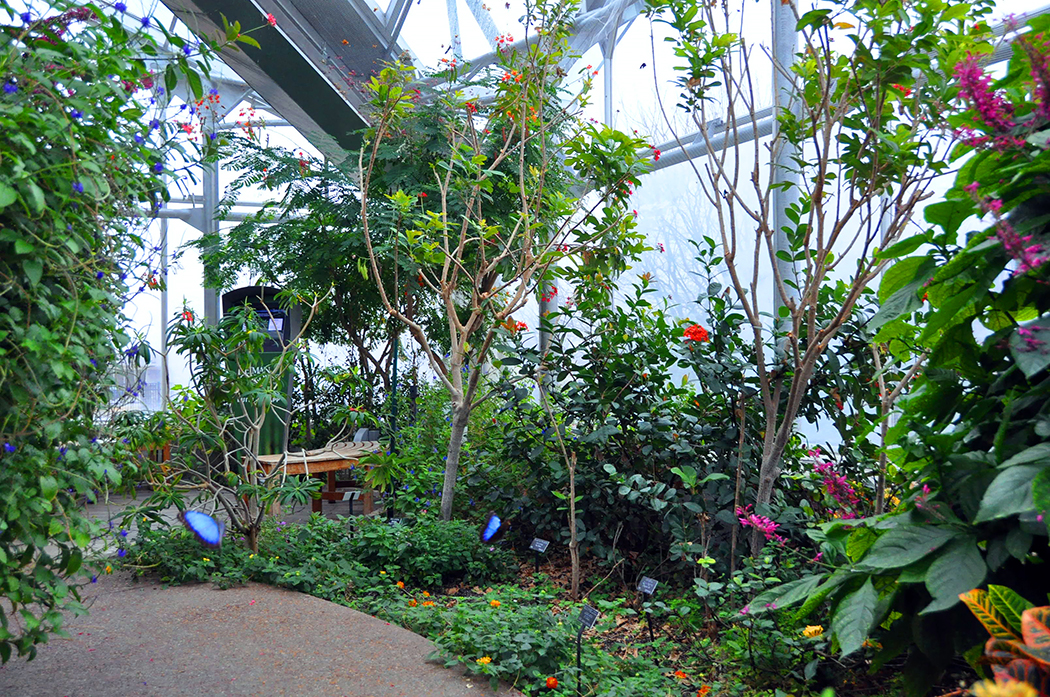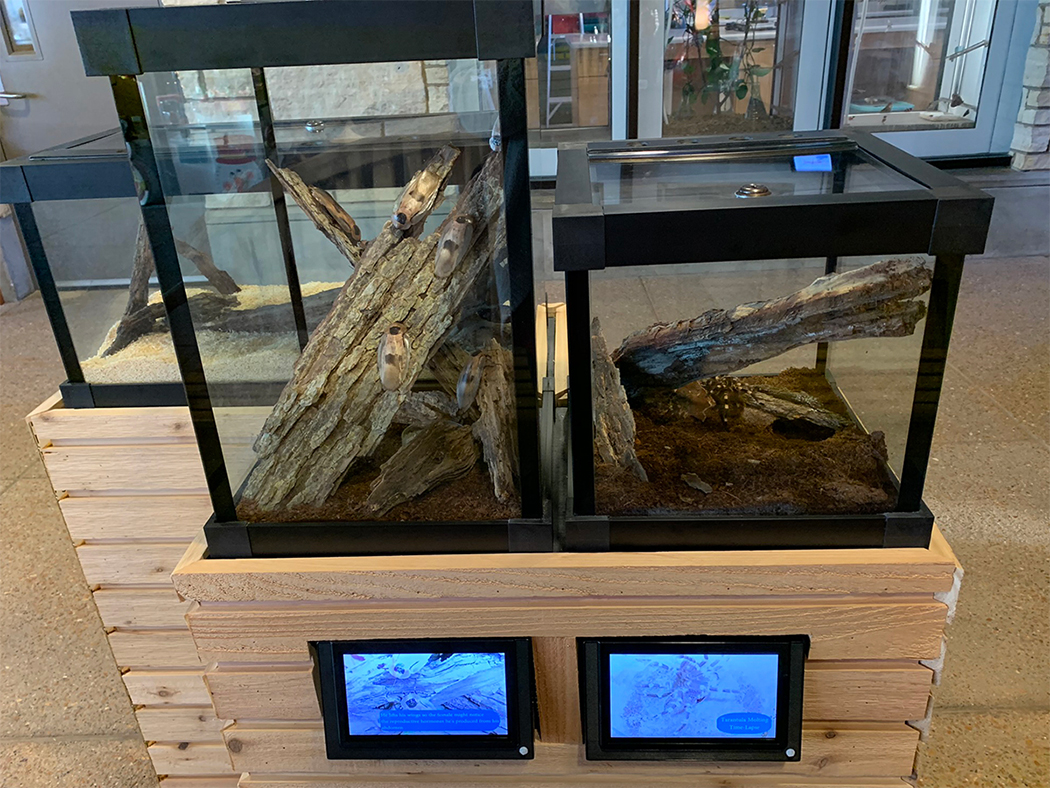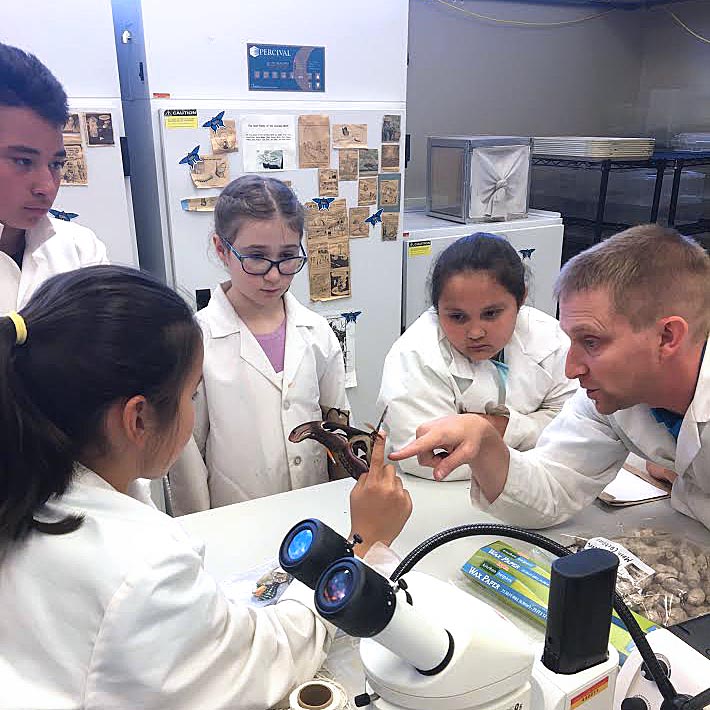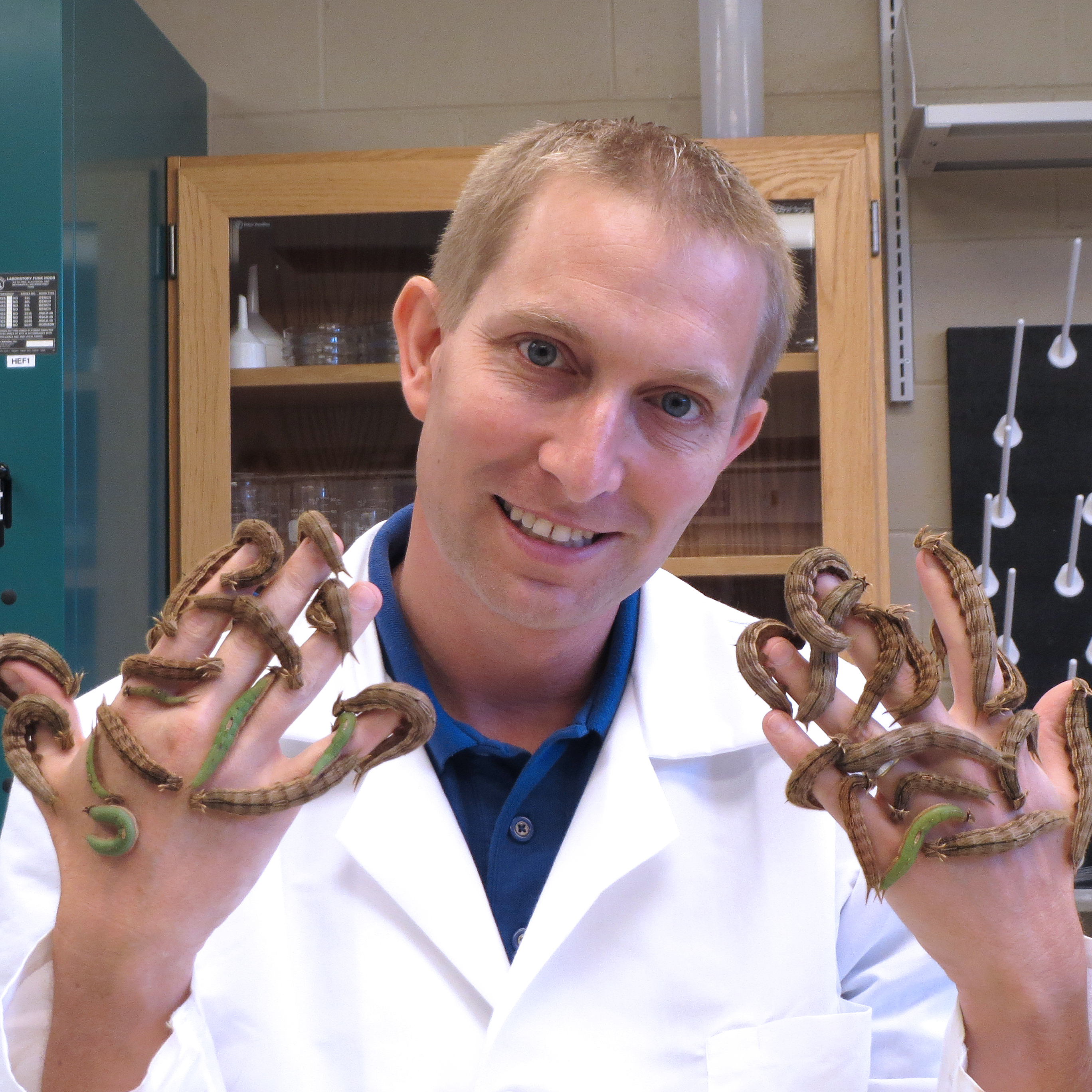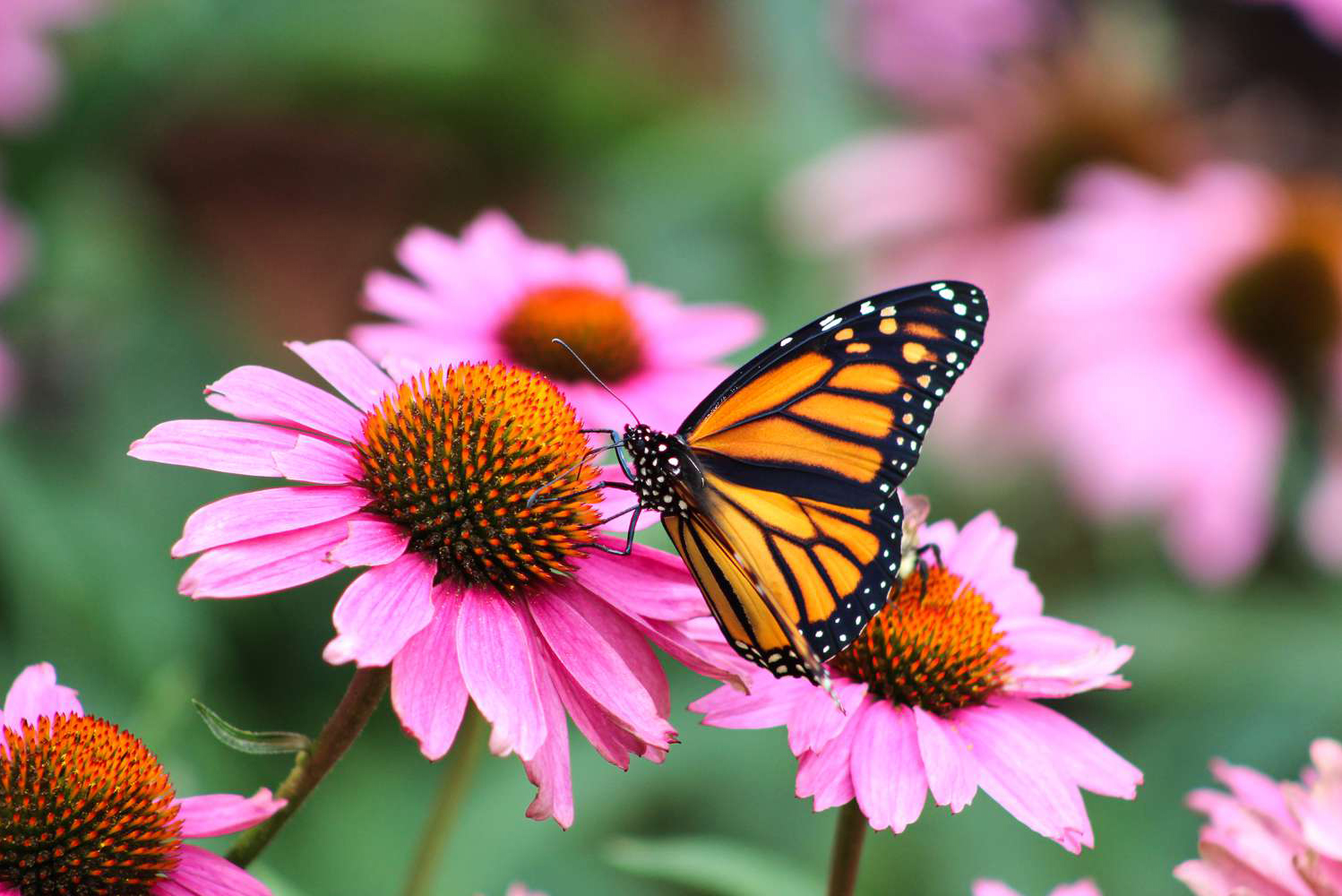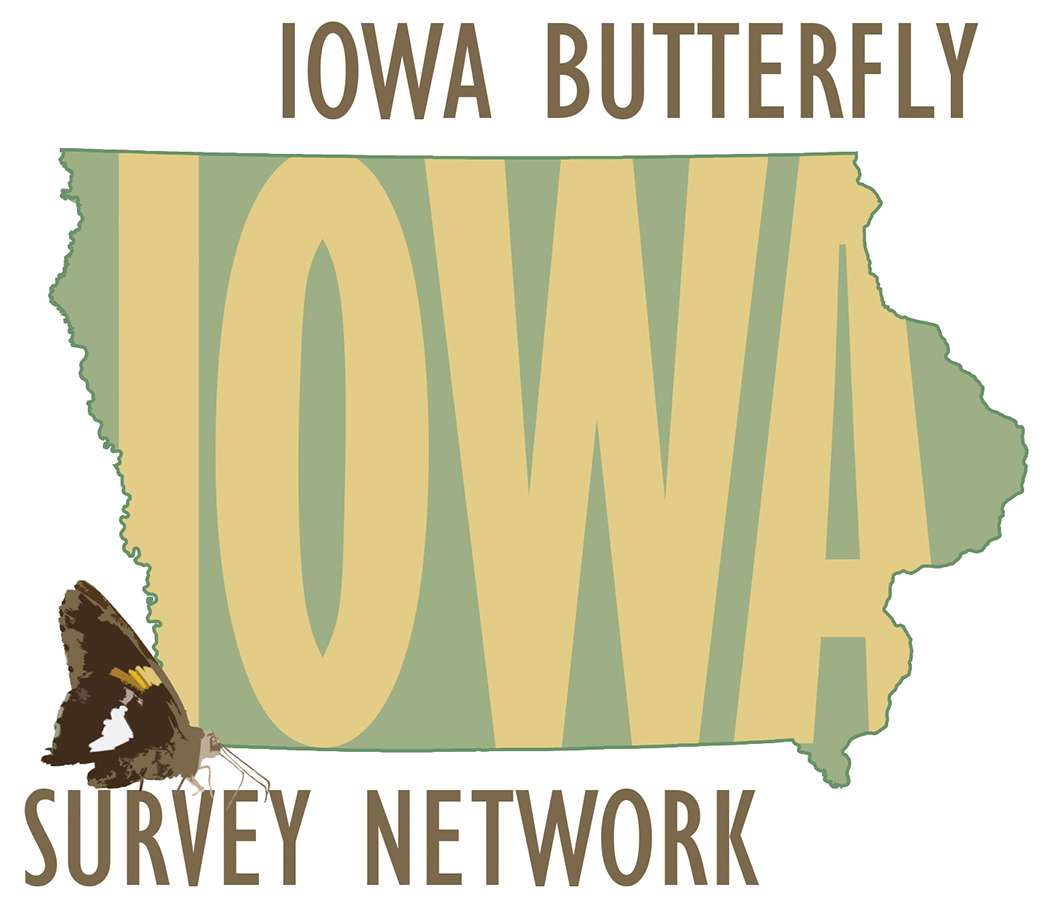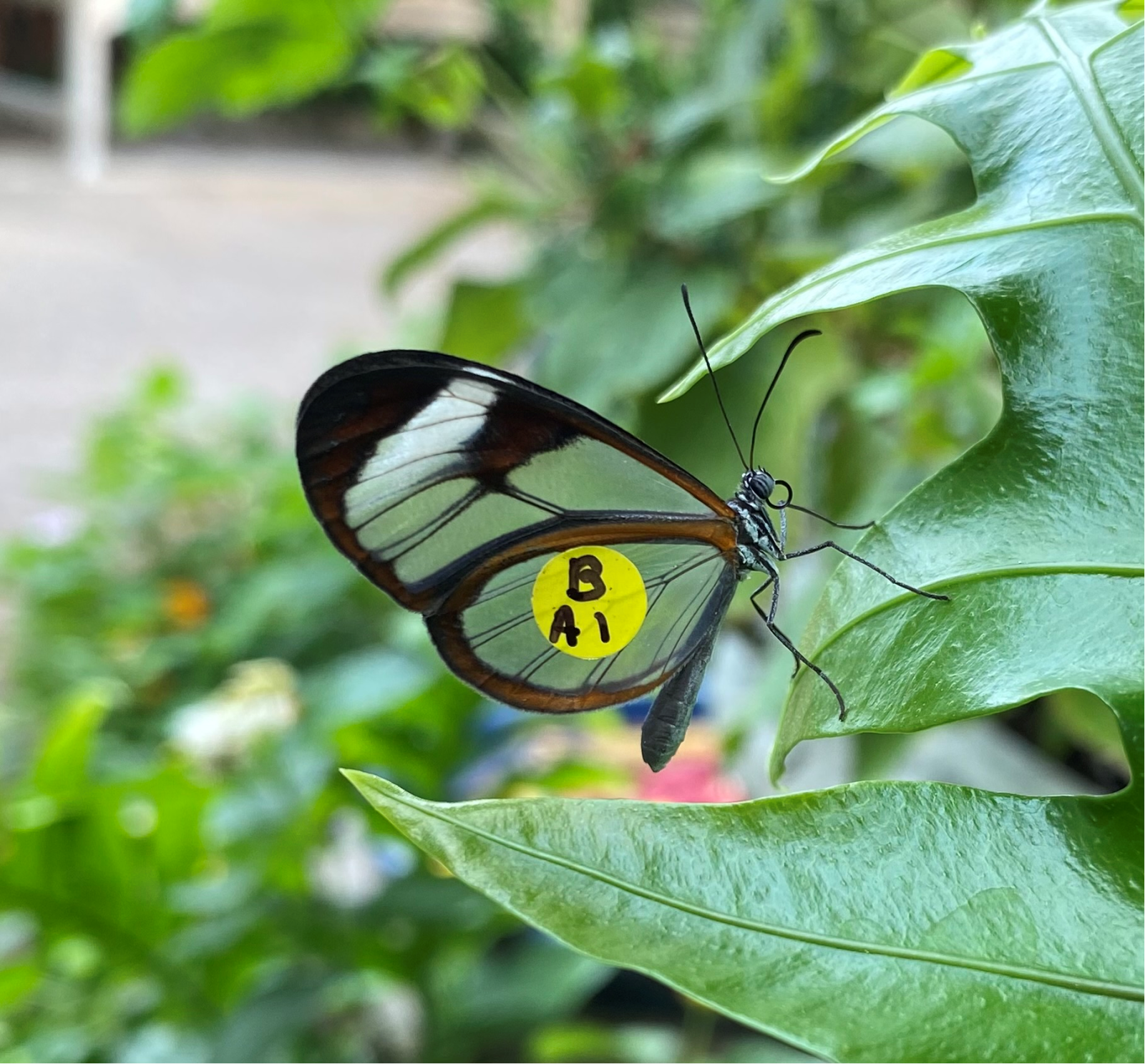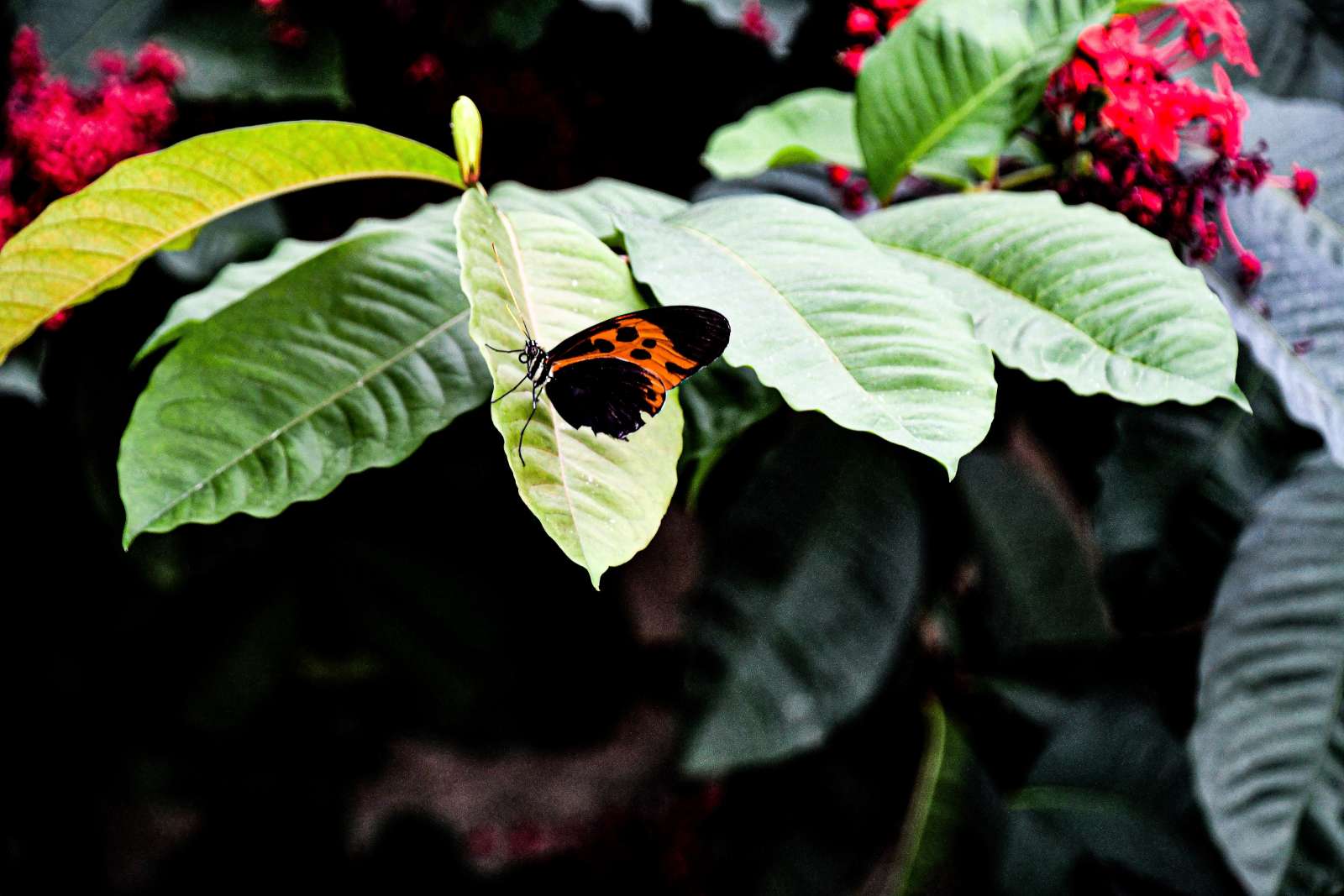Butterfly wings are made of two protein membranes that are covered in thousands of scales and tiny hairs. These wing scales are overlapping pieces of the protein chitin and are modified, plate-like setae. The colors and patterns of butterfly and moth wings come from these layers of tiny scales. There are many purposes for the scales and their coloration.
Butterflies with bright colors and patterns are advertising to predators that they are distasteful. There are also butterflies and moths that are very brightly colored that are mimicking a species that is bad-tasting in hopes of fooling its predators.
The scales form patterns that provide the butterflies with camouflage which helps them hide from predators by easily blending in with the environment. Common forms of butterfly or moth camouflage are wing patterns that resemble leaves or tree bark. Often, the scales on the top of a butterfly’s wings are brightly colored, while the scales on the underside are patterned for camouflage while the butterfly rests.
Butterflies get their colors from pigments and structures. The ordinary color comes from chemical pigments that absorb certain wavelengths of light and reflect others. For example, a butterfly that appears green soaks up the red and blue wavelengths of light and reflects the green, which is what you see when the light bounces back to the eye. Butterflies that are brown or yellow get their different shades from melanin, the same pigment that colors human skin. The metallic-looking color of butterflies stems from the specific structure of the butterflies’ wings and explains why some of a butterfly’s colors seem to shift, change, and appear intense. This quality of changing colors as the observer moves is known as iridescence. It happens when light passes through a transparent, multilayered surface and is reflected more than once. The multiple reflections compound one another and intensify colors.
Butterflies use colors and patterns for attraction and deception. Some butterflies look for certain colors or patterns when searching for a mate. Several species of butterflies and moths have eyespots on their wings. This tricks predators into thinking the butterfly is actually a larger animal, such as an owl.
There are often ultraviolet patterns on the wings that may be seen by other butterflies. These patterns are invisible to us, but are used by the butterflies to find and distinguish mates.
